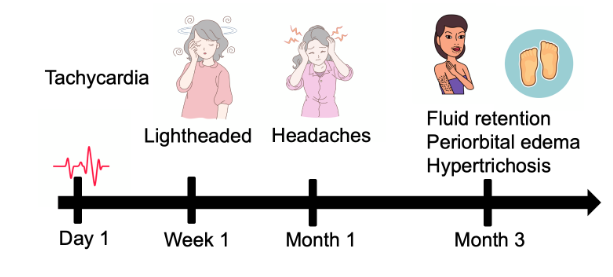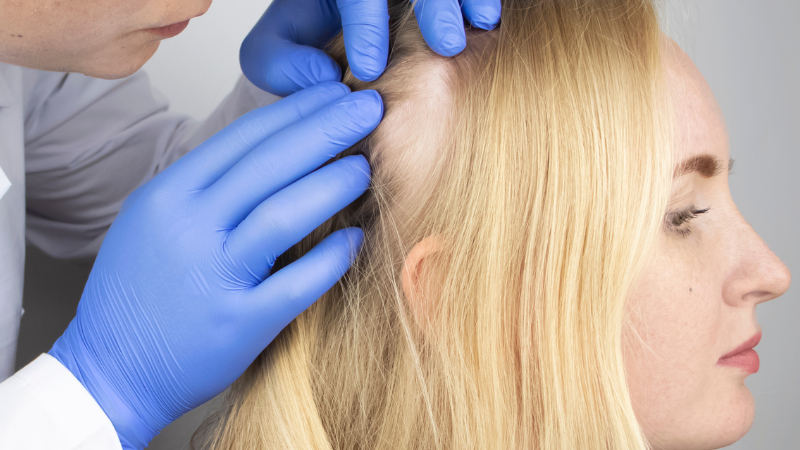Female Pattern Hair Loss (Androgenic Alopecia) Oral Treatments
There are many treatments for female pattern hair loss, and they are often used in combination. These are not a cure for hair loss and if discontinued the progression of hair loss will resume. NONE of these treatments should be used if you could get pregnant or are breastfeeding. It may take up to 6-12 months to start having effect. Some people get new regrowth and others maintain the hair that they have, and a small proportion do not respond.
Finasteride/Dutasteride (may have more side effects than finasteride)- 85% response rate
Dosage Instructions: 2.5-5 mg once per day.
- Contraindications: It should not be used in patients with a personal history of breast cancer.
- Side effects: Infrequent side-effects in female patients include breast tenderness and decreased libido, which are most common in the first year of therapy and tend to diminish with continued use. Whenever used in pre-menopausal women, it should always be combined with and oral birth control. Very rare side effects have been reported to include weight gain, muscle soreness, liver enzyme elevation, mood changes, dizziness, mild acne and headaches.
Spironolactone- at least a 40% response rate
Dosage Instructions 100- to 200-mg daily doses to treat hair loss. When employed as a “monotherapy”, 33 (49.3%) using monotherapy achieved improvement in follicular density and hair loss on spironolactone. When used with minoxidil it can be used in a dose as low as 25 mg.
- Contraindications: history of kidney disease, possible interactions with other blood pressure medications.
- Side effects: include dizziness, postural hypotension, breast tenderness, menstrual irregularities, and rare electrolyte imbalance.
Minoxidil- at least a 65% response rate
Dosage Instructions 0.625-mg for 2-4 weeks then to 1.25mg daily for at least 6 months
- Contraindications: pheochromocytoma; pulmonary hypertension with mitral stenosis and liver disease
- Side effects: Common side effects include dose dependent hypertrichosis and a transient hair shedding. Less common side effects may not be dose related and include mild changes in blood pressure, slight increase in heart rate, headaches, insomnia, postural hypotension/dizziness and edema. A study in over 1400 pts in 2021 showed hypertrichosis (15.1%), lightheadedness (1.7%), fluid retention (1.3%), tachycardia (0.9%), headache (0.4%), periorbital edema (0.3%), and insomnia (0.2%). No life-threatening adverse effects were observed.

Follow Us
Powered by PatientPoint

